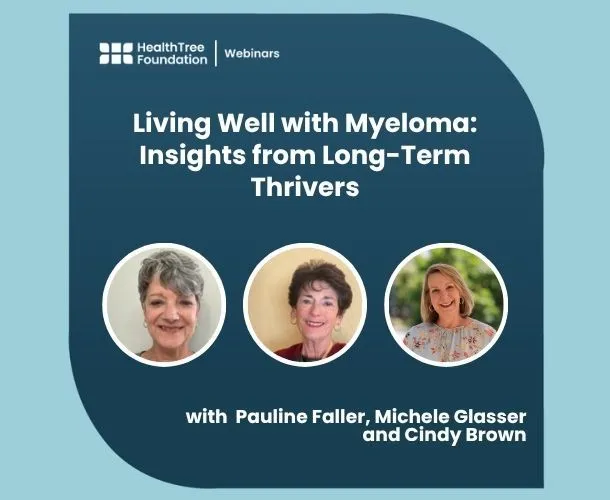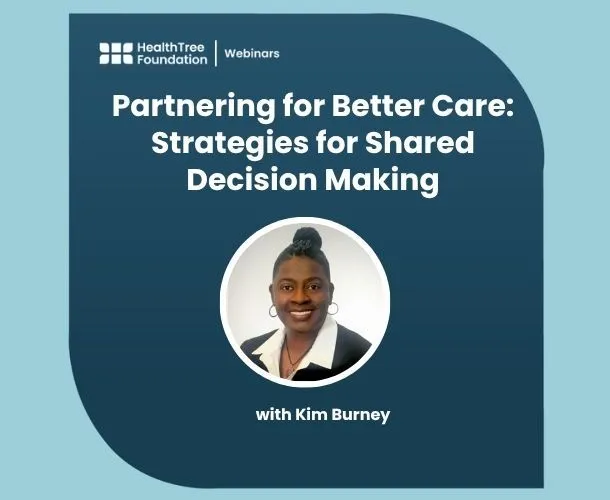ASH 2021: Chromosome 1 Abnormalities Should Prompt Vigilance

Chromosome 1 abnormalities may be high-risk disease features. Patients with them should have a heightened sense of awareness about their risk and include clinical trials in their treatment strategy, according to Timothy Schmidt, a myeloma researcher/clinician at the University of Wisconsin-Madison, who reported on a study at the American Society of Hematology (ASH) meeting.
“What’s clear is that gain of 1q (see below), even in a population that doesn’t have other high-risk features, is something that, if I were a patient, I would rather not have,” said Schmidt, “patients with that abnormality in this study did not do as well as those without. That was pretty clear from the data. But that doesn’t mean that there isn’t anything that can be done about that. It doesn’t mean that there’s no hope here or that if I have this, it’s the worst thing ever.”
Current International Staging System ((ISS) guidelines do not list chromosome 1 abnormalities as high-risk features. They exist in three categories:
- gain of 1q (+1q) - an additional q arm to chromosome 1, adding up to a total of three arms
- amplification of 1q (amp1q) - more than one additional q arm, can be many more than four arms
- deletion of 1p (del1p) - the p arm of chromosome 1 is completely missing
Each of the twenty-three chromosomes a person has normally come in pairs. Defects in one of the two arms of chromosome 1, p or q, are strongly associated with myeloma.
This study focused on narrowing down the various chromosomal abnormalities in a larger study (ENDURANCE), which compared KRd (Kyprolis, Revlimid, dexamethasone) to VRd (Velcade, Rd) in newly diagnosed myeloma patients (NDMM) who had no intention of having an autologous stem cell transplant (ASCT).
A total of 912 of the study’s 1,087 participants were tested for +1q at diagnosis, leading to 310 positive cases. Of those, the number of copies of arms of chromosomes could be determined in 280, 68 of whom had amp1q.
Chromosome 1 Abnormalities and Transplant
“I think the other important aspect is that this study didn’t include ASCT,” emphasized Dr. Schmidt, “I think there are a lot of patients who could get a stem cell transplant who don’t and these data that I showed in this presentation are for outcomes without an upfront transplant.
“There are other studies that show that patients with gain of 1q can actually have very similar PFS to those with normal 1q if they get a stem cell transplant up front. And this isn’t necessarily saying that if we gave all of these patients transplants they’d do just as well, but I think that this goes to show that without a stem cell transplant, and with VRd induction or something similar, you’re not likely to do as well because of that abnormality, and so you should think either about a clinical trial or getting a stem cell transplant, or both.”
Don’t Jump to Conclusions
This study was based on data from the ENDURANCE trial which compared kyprolis/lenalidomide/dex (KRd) to bortezomib/lenalidomide/dex (VRd) in newly diagnosed myeloma patients who chose not to have a transplant.
A cursory look at the data seemed to indicate that KRd was superior to the currently preferred VRd for patients with +1q and del1p, but not those with amp1q. Dr. Schmidt cautioned against drawing definitive conclusions based on the data.
“When we looked at progression-free survival (PFS), for all of these chromosome 1 abnormalities, there was no difference between VRd and KRd,” said Dr. Schmidt, “overall survival (OS) is clearly what matters. Overall survival and quality of life are far more important than progression free survival.
“The challenge with looking at that, though, is that for a disease like myeloma where there are so many treatments available, it’s really hard to distinguish a difference and a lot of the time the difference in overall survival that you might see has nothing to do with the treatment regimens that are being compared the first time,” he added.
“Historically high-risk disease has been thought to be something that using a more potent drug might be able to overcome some of the aggressiveness of the disease,” Dr. Schmidt explained, but this study did not bear that out.
Study Methods Highlight Unplanned Value of Data
The methods used for this study underscored unplanned applications of information and data from studies and real world evidence sources like the HealthTree Cure Hub. Some experts noted that the study did not specifically enroll or identify high-risk disease patients, therefore conclusions about them couldn’t be drawn.
But enrolled patients were given genetic tests, allowing researchers to identify patients with chromosome 1 abnormalities. “OK, well these patients were still enrolled, so let’s take a look at them and see whether carfilzomib (Kyprolis) was better than Velcade,” said Dr. Schmidt.
This study demonstrates how emerging information about myeloma can be applied to the data of ongoing and completed studies. Additionally, real world data sources—information gathered on patients not enrolled in clinical trials—allow researchers to gather more information on smaller patient populations like this one to create more effective therapies.
Post-ASH Myeloma Crowd Round Table Webcast on January 22
Dr. Schmidt will be featured on the Myeloma Crowd Round Table Webcast on Saturday, January 22 to discuss this and other ASH studies. He will be joined by Drs. Franceso Maura from the University of Miami and Sigrun Thorsteinsdottir from the University of Iceland.
To learn more and register, please click here.
Chromosome 1 abnormalities may be high-risk disease features. Patients with them should have a heightened sense of awareness about their risk and include clinical trials in their treatment strategy, according to Timothy Schmidt, a myeloma researcher/clinician at the University of Wisconsin-Madison, who reported on a study at the American Society of Hematology (ASH) meeting.
“What’s clear is that gain of 1q (see below), even in a population that doesn’t have other high-risk features, is something that, if I were a patient, I would rather not have,” said Schmidt, “patients with that abnormality in this study did not do as well as those without. That was pretty clear from the data. But that doesn’t mean that there isn’t anything that can be done about that. It doesn’t mean that there’s no hope here or that if I have this, it’s the worst thing ever.”
Current International Staging System ((ISS) guidelines do not list chromosome 1 abnormalities as high-risk features. They exist in three categories:
- gain of 1q (+1q) - an additional q arm to chromosome 1, adding up to a total of three arms
- amplification of 1q (amp1q) - more than one additional q arm, can be many more than four arms
- deletion of 1p (del1p) - the p arm of chromosome 1 is completely missing
Each of the twenty-three chromosomes a person has normally come in pairs. Defects in one of the two arms of chromosome 1, p or q, are strongly associated with myeloma.
This study focused on narrowing down the various chromosomal abnormalities in a larger study (ENDURANCE), which compared KRd (Kyprolis, Revlimid, dexamethasone) to VRd (Velcade, Rd) in newly diagnosed myeloma patients (NDMM) who had no intention of having an autologous stem cell transplant (ASCT).
A total of 912 of the study’s 1,087 participants were tested for +1q at diagnosis, leading to 310 positive cases. Of those, the number of copies of arms of chromosomes could be determined in 280, 68 of whom had amp1q.
Chromosome 1 Abnormalities and Transplant
“I think the other important aspect is that this study didn’t include ASCT,” emphasized Dr. Schmidt, “I think there are a lot of patients who could get a stem cell transplant who don’t and these data that I showed in this presentation are for outcomes without an upfront transplant.
“There are other studies that show that patients with gain of 1q can actually have very similar PFS to those with normal 1q if they get a stem cell transplant up front. And this isn’t necessarily saying that if we gave all of these patients transplants they’d do just as well, but I think that this goes to show that without a stem cell transplant, and with VRd induction or something similar, you’re not likely to do as well because of that abnormality, and so you should think either about a clinical trial or getting a stem cell transplant, or both.”
Don’t Jump to Conclusions
This study was based on data from the ENDURANCE trial which compared kyprolis/lenalidomide/dex (KRd) to bortezomib/lenalidomide/dex (VRd) in newly diagnosed myeloma patients who chose not to have a transplant.
A cursory look at the data seemed to indicate that KRd was superior to the currently preferred VRd for patients with +1q and del1p, but not those with amp1q. Dr. Schmidt cautioned against drawing definitive conclusions based on the data.
“When we looked at progression-free survival (PFS), for all of these chromosome 1 abnormalities, there was no difference between VRd and KRd,” said Dr. Schmidt, “overall survival (OS) is clearly what matters. Overall survival and quality of life are far more important than progression free survival.
“The challenge with looking at that, though, is that for a disease like myeloma where there are so many treatments available, it’s really hard to distinguish a difference and a lot of the time the difference in overall survival that you might see has nothing to do with the treatment regimens that are being compared the first time,” he added.
“Historically high-risk disease has been thought to be something that using a more potent drug might be able to overcome some of the aggressiveness of the disease,” Dr. Schmidt explained, but this study did not bear that out.
Study Methods Highlight Unplanned Value of Data
The methods used for this study underscored unplanned applications of information and data from studies and real world evidence sources like the HealthTree Cure Hub. Some experts noted that the study did not specifically enroll or identify high-risk disease patients, therefore conclusions about them couldn’t be drawn.
But enrolled patients were given genetic tests, allowing researchers to identify patients with chromosome 1 abnormalities. “OK, well these patients were still enrolled, so let’s take a look at them and see whether carfilzomib (Kyprolis) was better than Velcade,” said Dr. Schmidt.
This study demonstrates how emerging information about myeloma can be applied to the data of ongoing and completed studies. Additionally, real world data sources—information gathered on patients not enrolled in clinical trials—allow researchers to gather more information on smaller patient populations like this one to create more effective therapies.
Post-ASH Myeloma Crowd Round Table Webcast on January 22
Dr. Schmidt will be featured on the Myeloma Crowd Round Table Webcast on Saturday, January 22 to discuss this and other ASH studies. He will be joined by Drs. Franceso Maura from the University of Miami and Sigrun Thorsteinsdottir from the University of Iceland.
To learn more and register, please click here.

about the author
Greg Brozeit
Greg Brozeit has been with the HealthTree Foundation since 2015 when he began volunteering for the Myeloma Crowd. Prior to that he worked with Dr. Bart Barlogie and the International Myeloma Foundation, inaugurating many myeloma patient advocacy and education programs.
More on Conferences
Trending Articles




Get the Latest Multiple Myeloma Updates, Delivered to You.
By subscribing to the HealthTree newsletter, you'll receive the latest research, treatment updates, and expert insights to help you navigate your health.
Together we care.
Together we cure.
3x Faster.












